For the vast majority of businesses, the pandemic has been a major wake-up call in how businesses are run. One of the major lessons taken is how to prepare a business to survive in times of great change or crisis. A business continuity plan is vital for businesses of all sizes and in any sector Read more
Industry Blogs

For the vast majority of businesses, the pandemic has been a major wake-up call in how businesses are run. One of the major lessons taken is how to prepare a business to survive in times of great change or crisis.
A business continuity plan is vital for businesses of all sizes and in any sector and it’s something that you should be putting in place now.
What is a business continuity plan?
Business continuity is a term you’ve probably heard before, even if you don’t quite know what it means. Simply put, a business continuity plan outlines how a business will continue to provide key services at an acceptable level during a time of disruption or disaster.
What triggers a business continuity plan can be any of a wide range of situations. It could be a natural disaster, a fire or flood in your building, data theft, the loss of key personnel, political matters or something like a pandemic.

Who should be involved?
While it is usually the leader of a business and any outside consultants that develop the disaster recovery plan, all employees need to be aware of it and what their roles are when a business continuity plan is triggered.
Ensure that everyone knows the plan and what to do in an emergency. Put training in place such as medical training from MyCPR Now or cybersecurity and data protection awareness from your IT company.
Why do you need one?
Well, do you want your business to be able to operate in the event of a disruption? Overwhelmingly, the answer should be yes. Not being able to service your customers can cause huge reputational and financial damage and could put you out of business. Many business insurance companies will not be able to provide you with insurance if you cannot show that you have a business continuity plan in place.
What should be included?
No matter what business you’re in, or how big a company you have, the structure of your business continuity plan should concentrate on three particular areas. These are resilience, recovery and essential contingencies.
Resilience is working to identify your business-critical systems and personnel and working to arrange these with possible disruption in mind. This can include the distribution of key personnel, data backups etc. Can key systems be accessed off-site should something happen to your premises?
The second part of your plan should focus on how fast you can restore your key systems in the event of a disruption.
The contingency element of your plan should put in place a number of options that deal with different potential situations. For example, what would you do if certain key managers were unavailable or a key supplier was also affected?
Key points
A business continuity plan is important for all businesses. Even if you are a sole trader with no employees, you should think about all of the potential disruptions that could face your business and put measures and plans in place to protect your business.
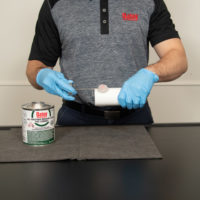
Solvent welding in a cold environment presents challenges that have to be counterbalanced. Why? Pipe and fittings take longer to soften in colder weather. The pipe is also more resistant to solvent attack, so softening it with an aggressive primer is important during cold weather. By following certain cold-weather solvent welding instructions, and demonstrating patience Read more
Solvent welding in a cold environment presents challenges that have to be counterbalanced. Why? Pipe and fittings take longer to soften in colder weather. The pipe is also more resistant to solvent attack, so softening it with an aggressive primer is important during cold weather.
By following certain cold-weather solvent welding instructions, and demonstrating patience, you can successfully solvent weld pipe joints in sub-zero temperatures (as low as -15°F).
We’re sharing seven tips to ensure successful solvent cemented pipe joints during the cold winter months.
-
Prefabricate as much of the piping system as possible in a warm environment.
We recommend assembling as much of the piping system as possible in a heated work environment. If you can control the temperature, it’ll make for better joints.
Any joints that must be made at the assembly work-site should be protected by some sort of temporary or portable shelter.
-
Store cement and primers in a warmer area.
Colder applications will require storing your pipe cement in a warmer environment (above 40°F). It’s important not to leave solvent cement outside in the cold for an extended period because it will take on a gel-like consistency. If the cement has gelled, we do not recommend using it. Solvent cement should remain fluid.
If you have bulk items on the jobsite, be sure to store them in a temperature-controlled area so it doesn’t come in contact with the cold.
Maybe you keep your cement and primers on your truck dashboard while you’re traveling between jobsites. In that case, if you’ve been out for a couple of hours, we recommend bringing them inside after your last service call. That way, the product can get acclimated to the warmer temperature and reach the right consistency for your next project.
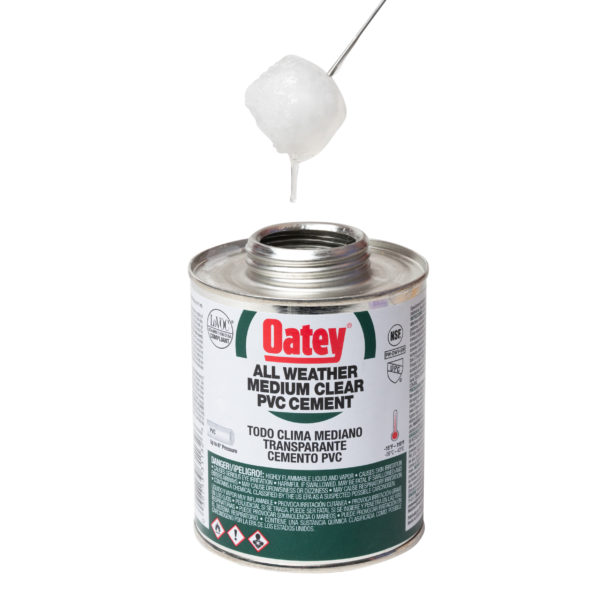
-
Remove moisture from the ends of pipe and surfaces.
Before starting the solvent welding process, take time to clean off pipe ends and fittings to remove any dampness, residual water or ice. If moisture penetrates the cement, it will cause it to gel.
Of course, wet or damp conditions are sometimes unavoidable. In that case, we recommend using a solvent cement formulated to cure in damp conditions, like Oatey Rain-R-Shine, a fast-set cement designed for wet conditions.
-
Aggressively apply primer to fittings and pipe.
Particularly in colder applications, be sure to apply and aggressively work in primer. Primer must be used to create a solvent weld on PVC and CPVC pipes. Oatey Purple Primer is an NSF-listed primer for use on all schedules and classes of PVC and CPVC pipe and fittings.
To understand the importance of applying primer, it may be helpful to think of the fitting and the pipe as your skin. Your pores are coated and closed tightly; working the primer more aggressively onto the fitting and the pipe will ensure that you open up the pores. That way, you are preparing the pipe to accept the cement.
While applying primer to fittings and pipes, be sure to re-dip between each application. Once you have primed the pipe and the fitting, you have five minutes to apply cement and finish the connection. Waiting too long will negatively affect the creation of a good solvent weld.
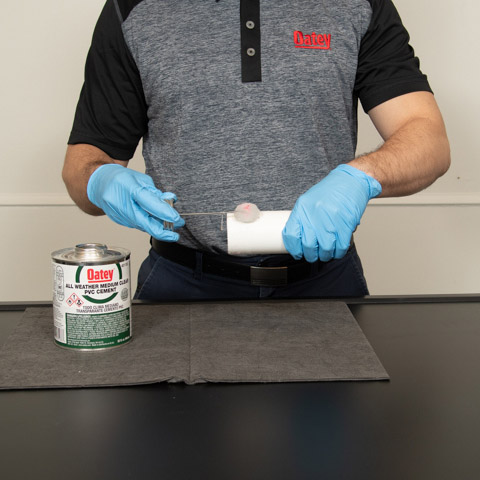
-
Vigorously shake or stir cement before usage.
Before every use, we recommend shaking the can or stirring its contents before application. That’ll help blend in the components of the cement, making sure you get an even consistency throughout.
-
Allow a longer cure time before testing or using the system.
Cure time depends on several factors: pipe material, pipe size, ambient temperature and humidity. However, solvent cement will take longer to cure in colder temperatures. Allow enough time for the solvents to evaporate before testing the system or putting it in service.
In temperatures between 20°F to 40°F, the joint may take up to three days to fully cure for higher pressure applications. However, be sure to refer to the average joint cure times provided by the manufacturer for PVC, ABS and CPVC solvent cement. For temperatures below 20°F, we recommend contacting Oatey Technical Services for exact cure time information.
Do not attempt to speed up the cure time by applying direct heat to the joint because that could deteriorate joint strength or affect the integrity of the pipe.
However, you can create a temperature-controlled environment to accelerate the process. If you have a temporarily heated area, you may close off the openings of the dwelling to help speed the process while leaving your pipe ends open so that airflow can enter the system and help the solvents evaporate.
View our overview document for more information on all our cement offerings and their cure/set times.
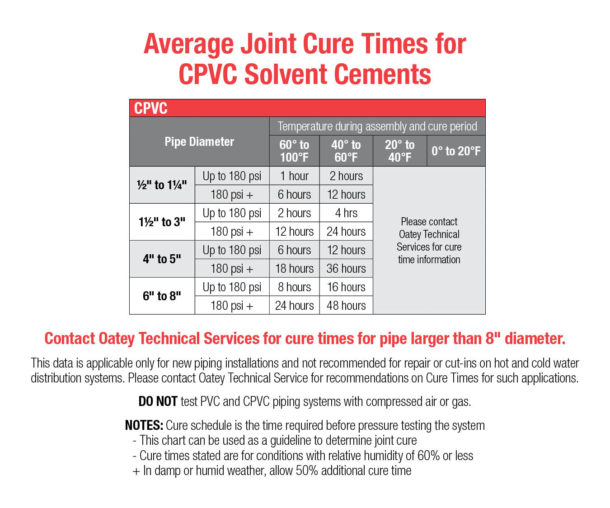
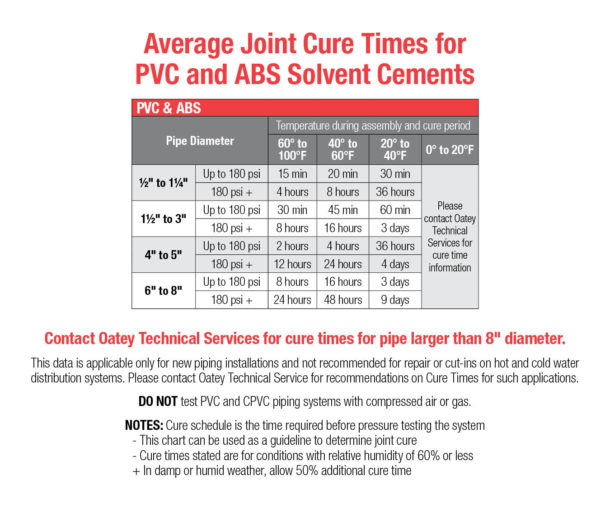
-
Follow all ASTM standards and steps.
It’s important to follow all ASTM standards and steps in the solvent welding process. Be sure not to skip any when preparing the pipe — for example, choosing not to chamfer the pipe.
If you don’t chamfer the pipe or bevel the outside edge, the sharp edges can scrape the cement off the walls of the fitting, as the pipe is being inserted. This could potentially cause blockage or leak paths.
In colder temperatures, it is especially important not to skip these steps because the cold makes creating a solvent welded joint more challenging. To ensure you follow all ASTM standards and create a perfect solvent weld, avoid these five common solvent welding mistakes.
With our application tips for cold-weather solvent welding, you’re well on your way to creating long-lasting, leak-free connections this winter.
Author’s biography: Sean Comerford is a Technical Customer Service Specialist at Oatey Co. He is a third-generation tradesman with nearly 20 years of plumbing experience, including serving as the lead plumber for commercial/residential new construction, service and fire protection jobs. He holds a State of Ohio Fire Protection License for Sprinkler and Standpipe.

All kinds of contracting businesses benefit from having an effective website to showcase their services. Websites serve as a business’s online headquarters, where site visitors can learn more about your company, what you offer and if your services will suit their needs. Believe it or not, 97 out of 100 people will visit a local Read more
All kinds of contracting businesses benefit from having an effective website to showcase their services.
Websites serve as a business’s online headquarters, where site visitors can learn more about your company, what you offer and if your services will suit their needs. Believe it or not, 97 out of 100 people will visit a local operation’s website to learn more about it.
Home service contractors may feel frustrated that they aren’t getting enough leads to keep their business running.
It may be because they haven’t done enough word-of-mouth marketing or their website is just not up to par. For these reasons, your business needs to create a website that measures up to your competitors and attracts potential clients.
Here are some of the essential components you need to consider incorporating into your website to generate leads, provide ample information for potential clients and gain business from your local community.

About Us/Services Page
This may seem like a no-brainer, but your website should have an “about us” section, as well as one that outlines the services you offer to your clients. You should put yourself in visitors’ shoes and answer any questions they have about your services.
For example, New York City-based West Village Contracting has a few sections on its website explaining its story and its services, so clients don’t need to search hard to find it.
Inquiry/Contact Forms
It’s important to offer site visitors an opportunity to ask questions about your business through inquiry or contact forms. They are an attractive component of any website, but especially for contractors. This is because many of your clients may have specific questions about a particular job they need done.
However, having an inquiry form alone is not enough — you’ll need to ensure that one or more of your employees spend dedicated time answering these client questions. For example, Cabex Construction has a specific contact section where clients can input their name and contact information and provide details about their remodeling project.
Testimonials Section
How will potential clients know about your services and reputation without hearing about other client experiences? It’s essential to have testimonials on your contracting business’s website for this reason. They prove to your clients that you’ll work hard to earn their trust.
For instance, Penco Electrical Contractor’s contact section offers plenty of testimonials from sources that will speak to the company’s performance and overall reputation. Having client references shows potential customers that your business is the one they should choose for all their home improvement needs.
Service Location Map
A service location map shows your clients the region you operate in. People who aren’t sure you’ll service their needs can view your map to determine what areas you cover.
Advanced Builders and Contractors in California has a drop-down menu on its homepage that lists all the regions it works in. It makes the task of selecting the right contractor for the job easier.
Consider these examples and the types of elements you need to include on your website to ensure you’re generating the most leads and attracting clients in your region.
Attract Visitors and Generate More Leads With a Stellar Website
Your website is your online headquarters, which is why you need to ensure it builds your reputation as a business. Potential customers will browse the internet to find contractors, so you should consider using these components to score high on a search engine results page and draw people in.
 April Miller is a managing editor at ReHack.com who specializes in engineering and construction technology. You can find her work published on sites like Open Data Science and The Society of Women Engineers.
April Miller is a managing editor at ReHack.com who specializes in engineering and construction technology. You can find her work published on sites like Open Data Science and The Society of Women Engineers.

Have a plumbing business and looking for effective ways to attract more customers? Below are just a few marketing strategies that are worth trying to help boost business. Build an attractive website A website is essential for generating customers and making your business look official. This needs to look professional in order to build a Read more
Have a plumbing business and looking for effective ways to attract more customers? Below are just a few marketing strategies that are worth trying to help boost business.
Build an attractive website
A website is essential for generating customers and making your business look official. This needs to look professional in order to build a sense of trust. Make sure that information like contact details, services you provide and credentials are clearly visible on the homepage. You can also display testimonials from happy customers. There are lots of cheap and easy ways to build your own website. Alternatively, you can always hire a web design company to make one for you.
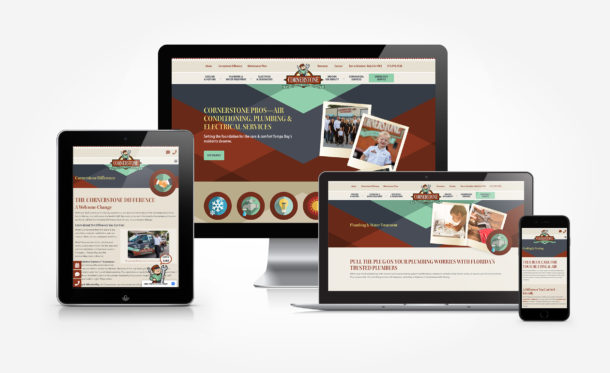
Get on social media
Social media is another great tool for connecting with customers online. You should create a Facebook business page at the very least. Post content on your page regularly – this could include updates, promotions and plumbing-related tips. Boost posts to help them reach a larger audience.
Encourage positive online reviews
A lot of customers like to look at online reviews before deciding whether a business is trustworthy. Encourage every happy customer you work with to leave a positive Google review. This will help you to encourage more customers by showing that you’re a company people can depend on.
Invest in SEO
SEO (search engine optimization) is a marketing strategy that can help to boost the rankings of your website. This can lead to more people visiting your site – and consequently more customers. SEO relies on using various tricks such as using keywords on your website and boosting the page of your site. It’s worth hiring an SEO company to do all this for you as it’s not something you can easily do yourself.
Print off some business cards
There are many types of marketing to try beyond online marketing. Handing out business cards is a simple and effective way to get business offline. If you meet someone who may be looking for a plumbing service, you can quickly exchange contact details and make yourself look more professional by handing out a business card. You can also post business cards through letterboxes and pin them up on public notice boards.
Consider taking part in local marketing events
There may be local events that you can sponsor – this involves putting some money into the event in exchange for being able to display branded posters and banners at the event. There could even be a local trade show worth entering – by renting a 10×20 trade show booth and showing up with some flyers, you may be able to generate some business.
Invest in branded vehicle wrapping
Your car or van could be used as a form of mobile advertising. Using a vinyl wrap you can easily promote your company name and contact details on the side of your vehicle. This will make your business look more professional, and you could generate some extra business from it. There are companies that specialize in producing these vinyl wraps.
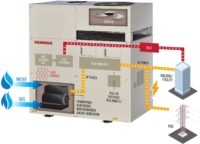
Propane CHP units offer resiliency, efficiency, and environmental protection Driven by the rising costs of electricity and increasing frequency of power outages, homeowners across the country are searching for energy solutions that are affordable, efficient, and reliable. When it comes to efficiency, there’s no doubt that micro-combined heat and power (micro-CHP) beats electricity supplied over Read more
Propane CHP units offer resiliency, efficiency, and environmental protection
Driven by the rising costs of electricity and increasing frequency of power outages, homeowners across the country are searching for energy solutions that are affordable, efficient, and reliable.
When it comes to efficiency, there’s no doubt that micro-combined heat and power (micro-CHP) beats electricity supplied over the grid. No longer limited to industrial and manufacturing applications, high-efficiency CHP systems have been making their way into more project types—including residential homes—through smaller micro-CHP units.
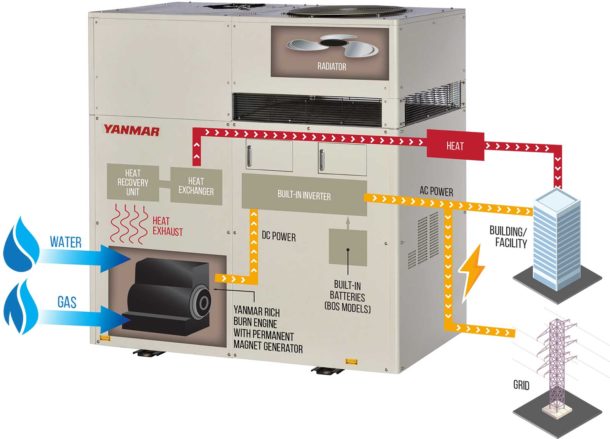
The basics of CHP and micro-CHP systems
The concept behind the micro-CHP system is simple: The unit replaces a traditional furnace or boiler and water heater with a single appliance that produces both hot water and heat as well as electricity for use in the home. Because the unit runs on propane and many units can start without power from the grid, it offers resilience and energy independence in the event of a power outage without the need for a standby generator.
Suppliers and builders who work with the technology say it can add up to considerable savings over time based on factors such as home size, location, and local electricity costs, but the value of CHP and micro-CHP units can be found nationwide.
Available in a wide range of capacities, CHP systems are ideal for single-family homes, apartment buildings, small businesses, utility power, and large commercial and industrial applications. For example, 1-3 kW units are ideal for 1,800-2,500 square foot single-family homes, 3-10 kW units work well for single-family homes with greater heating loads (like pool heating) and multi-family commercial and light industrial applications, and 10-50 kW units can power residential apartment buildings and commercial buildings (like restaurants).
Micro-CHP systems offer unmatched efficiency
A propane-powered CHP and micro-CHP unit’s total efficiency far outpaces the efficiency of traditional heating or water heating systems, providing operational savings from even the most efficient boilers.
According to the U.S. Environmental Protection Agency (EPA), the electricity that comes to a typical single-family home in the U.S. is only about 33 percent efficient. That’s because the heat used to generate it in a coal- or gas-fired power plant is lost, as is some of the electricity during transmission over high-voltage power lines.
Compare that to micro-CHP, which uses an on-site gas- or propane-fired engine to generate electricity while capturing the engine’s heat to produce hot water. These systems are typically 60 to 80 percent efficient, with some systems nearing 90 percent efficiency, according to the EPA.
CHP units are clean and environmentally friendly
Propane-powered combined heat & power (CHP) units produce significantly fewer harmful emissions, making it a better option for everyone—including customers. And as construction professionals know, environmental considerations continue to grow across the residential market.
Notably, the micro-CHP unit can reduce a home’s carbon dioxide emissions by nearly 50 percent, or 4.2 tons of carbon dioxide per year. Additionally, propane models reduce nitrogen oxide (NOx) emissions by 13 percent compared with natural gas and 50 percent compared with electric.
To determine if propane is the right fit for your next residential project, visit Propane.com.
 Bryan Cordill is director of residential and commercial business development for the Propane Education & Research Council. He can be reached at bryan.cordill@propane.com.
Bryan Cordill is director of residential and commercial business development for the Propane Education & Research Council. He can be reached at bryan.cordill@propane.com.
